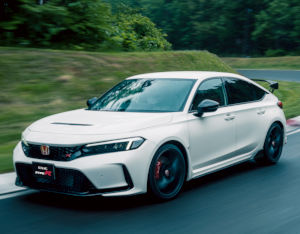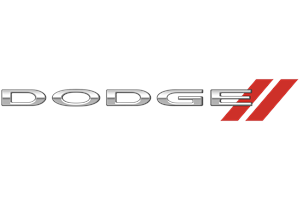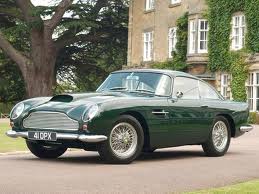


This edition of the Dodge Charger 6.1 SRT8 is the 5 speed / Auto version and was first brought out in 2008. This was at around the same time as the introduction of the 2008 Ariel Atom V8 500 and the 2008 SSC Ultimate Aero TT.This particular Dodge Charger has a 6059cc Naturally Aspirated Petrol powerplant with 8 cylinders in a V formation.
The Charger shares its Petrol V8 engine configuration with the likes of the 2023 Dodge Challenger SRT Demon 170 and the 2023 Ferrari SF 90 XX Spider 4.0 V8 Turbo. If you're looking for other fast cars which share the Charger's Rear Wheel Drive, Coupe combination then how about the 1982 Fiat X1/9 1.5 8V or the 1965 Aston-Martin DB6 1965.
Weighing in at 1938 kgs (4272 lbs) this makes the Dodge Charger 6.1 SRT8 in the same weight category as the 2022 BMW 3 Series M3 Competition Touring 3.0 xDrive or the give or take 50kg.
In terms of power the 6059cc 16V V8 engine produces 425 bhp (316 kW) @ 6200 rpm similar to the 2022 Ford Mustang GT 5.0 V8 (450 bhp) or the 2020 Lotus Evora GT410 3.5 V6 Supercharged (410 bhp).
The Naturally Aspirated V8 throws out 420 lb-ft (569.4 Nm) @ 4800 rpm placing it with cars of similar torque performance figures such as the 2024 Ford Mustang Dark Horse 5.0 V8 (418 lb-ft) or the 2023 Porsche Cayenne S 4.0 V8 Turbo (443 lb-ft).
If one combines the weight with power or torque performance for the Dodge Charger you can get a better idea of it's real world performance.
![Plymouth Barracuda 440 - [1970] image Plymouth Barracuda 440 - [1970] image](/editionimages/1264.jpg)
The 1970 Plymouth Barracuda 440 (244.2 bhp per ton) has similar Bhp Per Ton stats as the Dodge Charger.
The Dodge Charger has a Power to weight ratio of 219.2 bhp per ton and 216.7 lb-ft per ton. Bhp Per Ton figures of the 2008 Charger competing with the 1970 Plymouth Barracuda 440 (244.2 bhp per ton) or the 2019 Audi A4 RS4 Avant 2.9 V6 Turbo (243.9 bhp per ton).
If you agree with the late great Carroll Shelby then arguably an even better indicator of potential performance, Torque. Use weight as well and you end up with - Torque per ton, with the Dodge Charger generating around 216.7 lb-ft per ton. If you're curious as to what other cars have as much torque to weight then look no further than the 2015 Aston-Martin DB9 GT Volante 5.9 V12 (241.7 lb-ft per ton) or the 1995 Chevrolet Corvette C4 ZR1 (241.6 lb-ft per ton).
With a 0-60mph time of 4.80 secs or a 0-100km/h (0-62mph) of 5.0 secs, this made the Dodge Charger 6.1 SRT8 as fast as the 2021 Porsche Taycan 4 Cross Turismo (4.80 secs) the 2020 Audi TT S Turbo 50 TFSI (4.80 secs) the 2018 Rolls-Royce Cullinan 6.7 V12 Turbo (4.80 secs) the or the 2017 Dodge Charger Daytona 392 (4.80 secs). This Dodge Charger 6.1 SRT8 is also faster than the 2023 Toyota Corolla GR Morizo Edition 1.6 Turbo (4.90 secs) the 2022 Mini Cooper Countryman John Cooper Works 2.0 Turbo (4.90 secs) the 2021 Ford Mustang GT 5.0 V8 (4.90 secs) the and the 2020 Honda Civic Type R 2.0 16V Touring (4.90 secs).
When talking about the performance of the Dodge Charger on the drag strip it can reach a quarter mile in an estimated 13.66 secs @ 100.1 mph. Similar performance down the quarter mile can be found with the the 2008 Subaru Impreza WRX S (13.60 secs), the 2017 Hyundai i30 N Performance 2.0 Turbo (13.60 secs), and the 2008 Audi A3 S3 2.0T (13.61 secs).
Modern performance cars are often artificially restricted to 155mph. The 2008 version of the Dodge Charger 6.1 SRT8 has a maximum speed of 173mph.
If maxing out your car on the AutoBahn is your thing and you're wondering what's faster than the 2008 Dodge Charger 6.1 SRT8 then how about the 2022 Porsche 911 GT3 RS 992 (184 mph), the 2021 Chevrolet Corvette Stingray Z51 6.2 V8 C8 (184 mph), or the 2014 Porsche 911 Targa 4S 991 (184 mph).










Audi A5 S5 3.0 Quattro Cabriolet
Engine: Naturally Aspirated Petrol | 2995cc 24v V6
Top Speed: 155 mph
0-60mph: 5.60 seconds

Aston-Martin DB4 GT
Engine: Naturally Aspirated Petrol | 3670cc 12v St6
Top Speed: 244.6 kph
0-100kph: 6.6 seconds



















